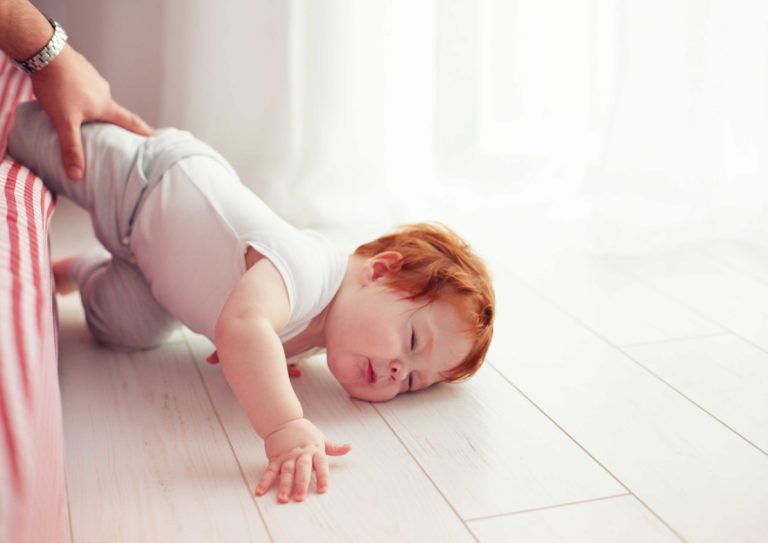
Your toddler is finally on their feet! It’s an exciting time, but it can also be a scary time for parents. Falling is a natural part of childhood, as children begin to learn to walk and explore their surroundings. Frequent falls occur between the ages of 1 and 3 years and are the most common reason children under 5 years visit a hospital.
Most falls are harmless; however, some can result in serious injury, including broken bones, wounds, or even head/brain injury.
Sources of Falls
- Stairs or steps
- Play equipment
- Furniture
- Baby walkers
How Falls Happen
Falls are the most common childhood injury. Slips and falls are a normal part of a child’s development. As children begin to become more mobile, their confidence and curiosity increase. Most falls occur because children are unsteady and unaware of their surroundings. Toddlers are learning how to coordinate their movements. It takes time to develop the skills, strength, and balance to become a secure walker. The environment can also be a factor. Slippery surfaces like those in the kitchen or bathroom can be dangerous, especially when wet.
What to Do When Falls Occur
Don’t panic! Assess the situation by examining the child for visible injury. If your child can speak, ask them to tell you what happened and where they are hurting.
- If there is bleeding: Apply firm pressure to the area with a clean cloth or bandage for 5 to 10 minutes. For deep cuts, especially on the face, head to the emergency room.
- When breathing is painful or difficult: Consider this an emergency and call 911 or head to the emergency room.
- If the area is swollen: Apply ice for 15 to 20 minutes at a time. This is important to do immediately for best results in reducing pain and swelling.
- Look for less obvious injuries: Sometimes, a fall can cause more than one injury. A minor fall may result in scrapes, scratches, and bumps in one or more areas. A serious fall could include a combination of head, neck, back, or spinal cord injury.
- If the child is unable to move the injured area: This could indicate a fracture or broken bone. A trip to urgent care may be warranted. Apply ice to the area and call your doctor.
- If your child hits their head: Look for symptoms of confusion, sleepiness, weakness, and vomiting. Concussions can be difficult to diagnose. If you feel your child has any of these symptoms or they worsen, call your doctor right away.
Prevention
While it’s impossible to avert every fall, some things can be done to prevent them.
- Childproof your house by eliminating sharp corners or rough edges on things like coffee tables or counters.
- Watch for dangling cords or wobbly furniture.
- Keep drawers and doors closed to prevent climbing or access to stairs.
- Always wear a helmet when riding bikes or scooters.
The information and content on our website should not be used as a substitute for medical treatment or advice from your doctor.

